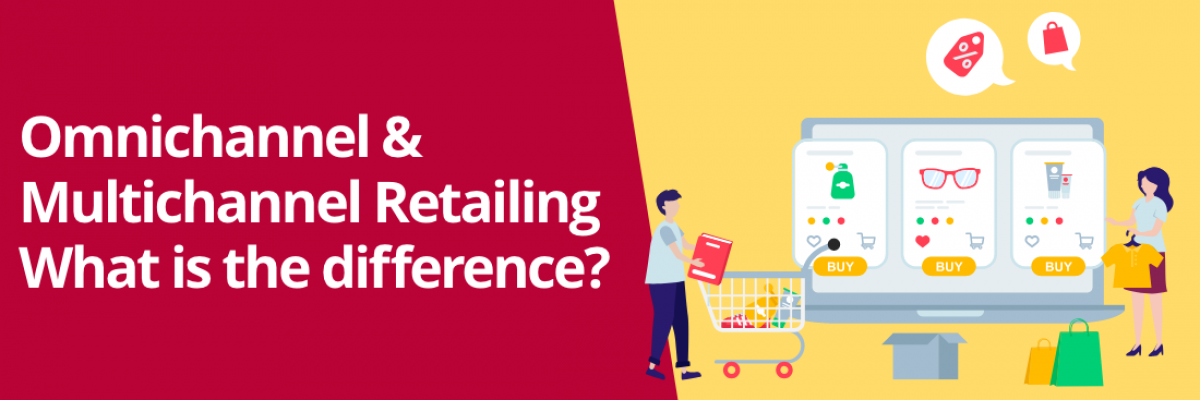Omni-Channel vs Multi-Channel Retailing: Strategies & Trends
If you are a store owner, chances are high that you often come across the terms omnichannel and multichannel retailing in everyday business. But you might be curious to know what they are, and how they differ with each other.
Customers buy something not only online but also at offline stores or through social media channels and many other ways. So, if you want to improve customer engagement, it becomes a necessity now to have your presence in all sales channels. However, at the same time, you have to provide a unified experience across all channels to build customer loyalty.
Omni-Channel vs Multi-Channel Retailing
It is this customer touchpoints that make up the incredible shopping experience and are termed as omnichannel and multichannel retailing. Anyway, what is the difference between these terms and how well it is adopted by the retailers? Let’s discuss them now.
What is multi-channel retailing?
Multichannel retailing is the practice of selling products on more than one sales channel. It’s all about moving beyond your ecommerce website and exploring sales channels like marketplaces, comparison-shopping engines, social media, etc. It is a marketing strategy that offers your customers different ways to buy products.
The purpose of a multichannel retailing strategy is to maximize revenue and loyalty by offering your customers choice and comfort. Since the customers are shopping in more locations than ever, with this strategy, they have many ways and means to choose from, online or offline.
It is the approach of businesses reaching down to the customers as per their preferred choice through the best multichannel ecommerce platform. The final shopping may be across any of the channels, but the combined effect of the various channels helps to facilitate the shoppers’ buying decision process in numerous ways.
What is omni-channel retailing?
As a retailer, you might observe that traditional retail and ecommerce touchpoints are fragmenting and merging at the same time. This process of joining up different channels is now being termed as omnichannel commerce.
Omnichannel (meaning: all channels) retailing is a fully-integrated approach that provides shoppers with a unified experience (e.g., touchpoints) across online and offline channels. True omnichannel shopping extends from brick-and-mortar stores to mobile commerce, online storefronts, ecommerce marketplaces, social media channels, retargeting, and everything in between.
Omnichannel is a buzz word that has been around for over a few years yet is still often confounded with multichannel when it comes to retail. Most retailers have now focused on selling their products across more than one channel. However, there are only a handful of truly omnichannel retailers.
Multi-Channel vs Omni-Channel
Despite that fact that both multi and omnichannel involve selling across multiple offline and online channels, the key contrast is how the customer experience is cohesive across those channels. A traditional multichannel retailer may have an online store and physical store. These two channels are generally isolated from each other and have minimal interaction with one another.
The physical stores will have their own stock and will sell directly to customers, while the website will have its own stock. Items purchased in physical stores can only be returned in-store, and online orders cannot be returned in the physical store. As a retailer, your online interaction with the customer is completely separated from your offline interaction. In essence, the customers treat your online and offline channels as separate businesses.
If you want to engage consumers today, every one of these channels and touchpoints matters because the shoppers are scripting their own journeys. Making a shopper stick to one channel or asking them to start at the beginning when switching channels creates friction and impacts their experience.
Thus, the major difference between these two channels is that omnichannel combines the touchpoints so that, whatever path the customer chooses to take, the experience is consistent and unified.
Omnichannel: Is it the future of retail?
Today’s millennial consumers do not tend to see a brand in silos. They expect to have multiple touchpoints with a retailer and also, they want the journey between each touchpoint or channel should be seamless. The customers, for instance, want something like click and collect or reserve in store.
On the other hand, most retailers like you, have your presence across more than one channel. However, it is hard to find examples of retailers who are providing unified experience throughout their entire business. As such, there is an opportunity for you to embrace the elements of omnichannel within your business, thereby, making yourself likely to be preferred by shoppers.
That being said, the future of retail seems to allow shoppers to make in-store purchases for items that are available online, as well as making the stock that is in store available on the web. Brands like Argos have been leaders in initiatives like click and collect. But the question is, are you ready for omnichannel retail?








